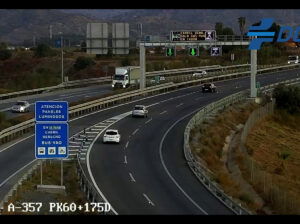Lonely drivers beware – Spain’s traffic cops are cracking down, and you could end up €200 lighter if you try to sneak a solo ride through certain lanes!
Credit: Edgar Conejo, Shutterstock
Drivers who love the freedom of cruising solo around Spain might soon find their wallets taking a hit – for being alone at the wheel. But as of writing this article, driving alone in most major cities is still legal, as long as you stay out of special lanes. Here’s everything you need to know about the signs and the fines.
Spain’s Directorate-General for Traffic (DGT) sent shockwaves through the motoring world in April, warning that driving alone could soon be a thing of the past in some parts of the country.
According to the DGT, the crush of cars choking up Spain’s biggest cities has hit a breaking point – and drastic action is needed. In plain terms: if you want to keep driving into the cities, you’ll soon need to start buddying up.
Most Read on Euro Weekly News
Clogged cities and furious drivers
The DGT’s message couldn’t have been clearer: ‘Cities are saturated. They can’t take any more cars.’
Thousands of cars have already been booted out of city centres thanks to low-emission zones and traffic restrictions.
Now, with most drivers still travelling solo, Spain’s traffic chiefs are eyeing up tougher measures to force carpooling.
Madrid already leading the charge
Think it’s just a future threat? Think again. In Madrid, it’s already a reality.
The A-6 motorway, nicknamed the Madrid-La Coruña road, boasts a VAO lane (that’s “vehículos de alta ocupación” or “high occupancy vehicles”).
Here, it’s simple: no carpool, no passage. Only cars with at least two people can cruise through – unless you’re in an electric car, a bus, or another exempt vehicle.
Get caught riding solo in the VAO lane and you’ll be slammed with a €200 fine – because it’s considered a “serious offence” under Spanish traffic law.
Mannequins, dummies… and even inflatable dolls
Of course, where there are rules, there are cheeky attempts to bend them.
Police have already caught crafty drivers trying to cheat the system by strapping mannequins, dummies, and even inflateable latex dolls into the passenger seat to make it look like they weren’t alone. Spoiler alert: it didn’t end well. Fines for trying this stunt are even harsher – and officers have become expert at spotting your fake “passengers.”
As the DGT put it in April, solo drivers will have to “get used to the idea that, in the future, driving alone will no longer be an option”
How to recognise the sign
 Carril VAO DGT Spain.
Carril VAO DGT Spain.
Credit: DGT Spain.
Carril VAO (Vehículos de Alta Ocupación) = High-Occupancy Vehicle lane (HOV lane).
These lanes are reserved for vehicles carrying at least two people (sometimes more, depending on the sign).
The official road sign is usually:
A white diamond symbol (◇) on a blue background.
Sometimes accompanied by text like “VAO mínimo 2 personas” (HOV lane, minimum 2 people).
On Spanish motorways like the A-6 (Madrid–La Coruña) and C-58 (Barcelona), these VAO lanes are already operating.
Solo drivers who use a VAO lane illegally are fined €200, because it’s classified as a serious traffic offence.
Electric cars, hybrid cars, motorcycles, buses, and cars carrying people with reduced mobility are often allowed exceptions — depending on local rules.
What it means for you
If you’re living in Spain or just here for a cheeky summer getaway, it pays to check before you drive into any big city. Special lanes and restrictions could catch you out – and ruin your holiday fund faster than you can say “sangría.”
Top tip:
If you’re driving into Madrid, Barcelona, or any other major city, check whether high-occupancy lanes are active.
Don’t even think about using a dummy – Spanish police are watching, and they’re not in the mood for jokes.
As always, drive safely, and stay tuned to the Euro Weekly News.
Have your say! What do you think of the DGT’s statements about phasing out solo drivers in Spain? Is it a good thing long term, or is it just punishing people trying to get to work and go about their normal lives?
Have your say in the comments section below.
Get news written for people living in Spain.
Get more news about driving in Spain.
